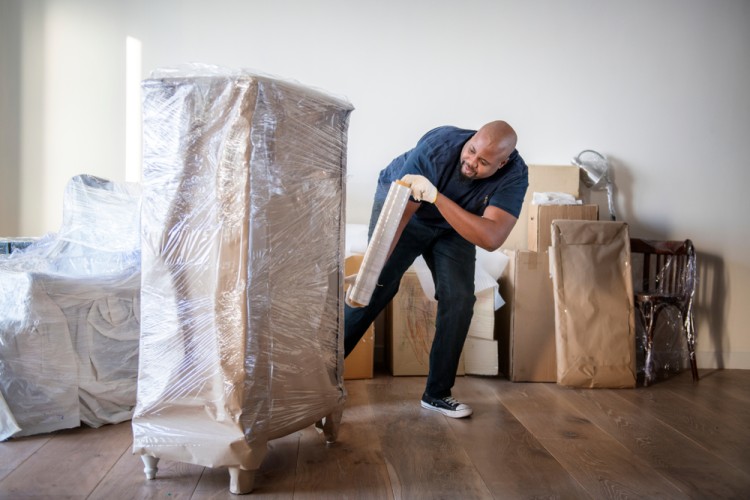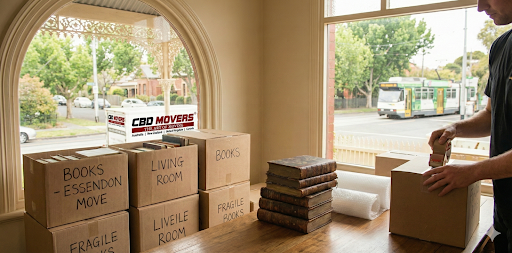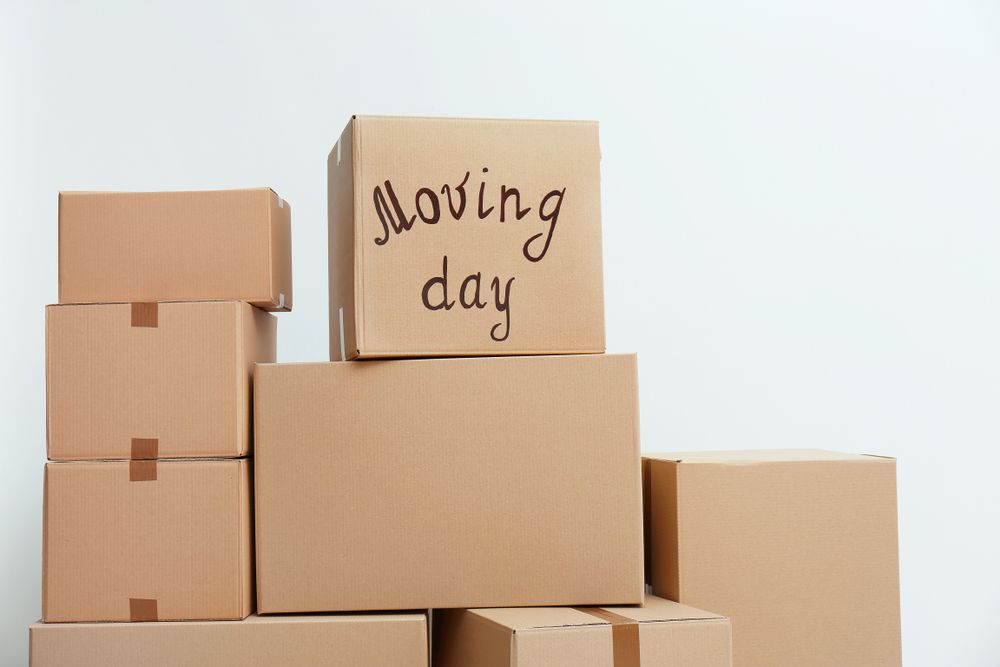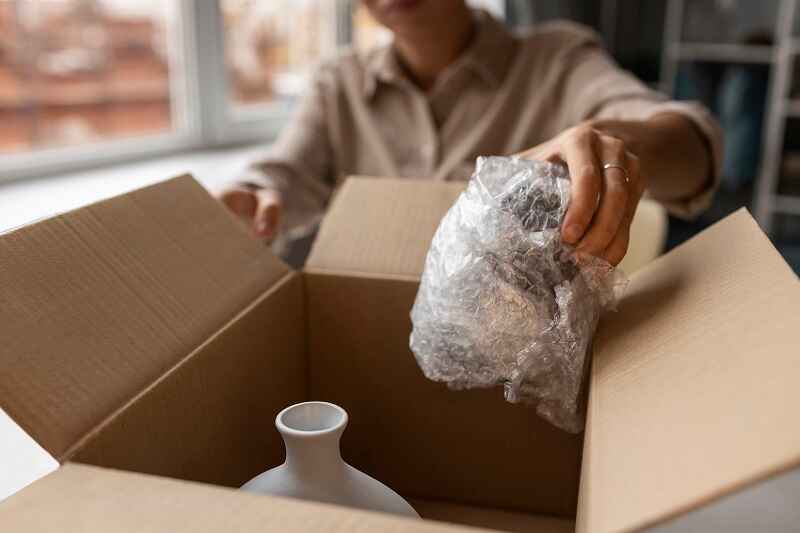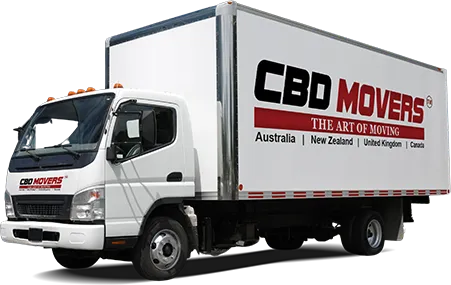Moving to a new home is an exciting milestone, but it also comes with its fair share of challenges – especially when it comes to packing and moving your beloved furniture pieces. From delicate antiques to bulky sofas, ensuring the safe transportation of your furniture is a challenging task that requires careful planning and execution.
At CBD Movers, we’ve helped thousands of Australians navigate the complexities of furniture removals, and we’re here to share our insider tips and tricks to make your move as smooth as possible.
Preparation is Key: Getting Organised for the Big Move
Before you even think about wrapping your furniture in bubble wrap, getting organised is crucial. A well-planned move will not only save you time and energy but also minimise the risk of damage to your precious belongings.
Tip #1: Create a Comprehensive Inventory
It’s important to know what you’re working with when moving your furniture, which is why it’s a good idea to audit your furniture pieces. Making a detailed list of your inventory will help you keep track of your belongings and ensure nothing gets misplaced during the move. Take note of each item’s dimensions, materials, and any special features or instructions for handling.
Tip #2: Declutter and Downsize
Moving is the perfect opportunity to declutter and get rid of any furniture pieces you no longer need or want. You can donate the furniture pieces you no longer need or sell them via marketplaces. This will lighten your load and save you money on moving costs.
Tip #3: Measure Doorways and Stairwells
Before moving day, measure the doorways, hallways, and stairwells in both your current and new homes. This will help you identify any potential obstacles and determine if any furniture pieces need to be disassembled or if you need to hire professionals for more intricate moves.
Disassemble What You Can
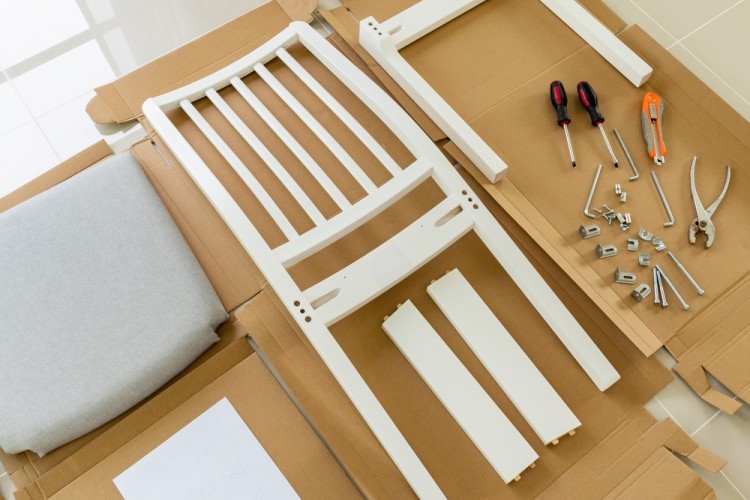
Taking apart larger pieces of furniture serves two purposes: it makes them easier to move and reduces the risk of damage. Here’s how to approach disassembly:
- Start early: Disassembling furniture can be time-consuming, so start this process well before moving day.
- Keep track of hardware: Use small plastic bags to store screws, bolts, and other hardware. Label each bag and tape it to the corresponding furniture piece, or keep all bags together in a clearly marked box.
- Take photos: Before you start taking things apart, snap a few photos. These will serve as a handy reference when it’s time to reassemble at your new home.
- Be gentle: Don’t force anything. If a piece isn’t coming apart easily, consult the manufacturer’s instructions or consider leaving it to the professionals.
Packing Furniture Like a Pro: Materials and Techniques
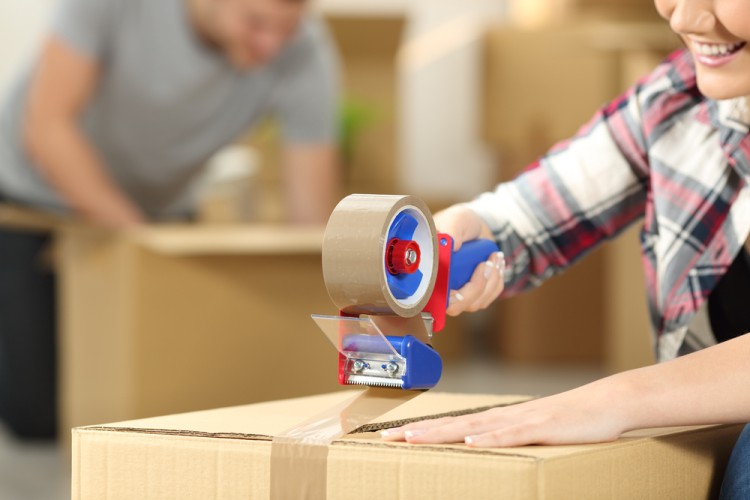
Now that you’ve got your ducks in a row, it’s time to dive into the nitty-gritty of furniture packing. Having the right materials and techniques at your disposal can make all the difference in ensuring your furniture arrives at your new home in pristine condition.
Essential Packing Materials
Bubble Wrap
Bubble wrap is an indispensable ally when it comes to protecting your furniture during a move. Its air-filled cushions provide an excellent barrier against scratches, dents, and other potential damage.
Whether you’re packing a delicate antique mirror or a sleek glass-top table, bubble wrap should be your go-to material for wrapping and cushioning those vulnerable surfaces and corners.
Don’t be stingy with the bubble wrap – it’s better to use too much than too little. Wrap each item snugly, making sure that there are no gaps or exposed areas. For added protection, consider double-wrapping especially delicate or valuable pieces.
Moving Blankets
Moving blankets are heavy-duty blankets designed to provide superior cushioning and protection for larger pieces of furniture, such as sofas, dressers, and armoires.
moving blankets safeguard furniture from scratches and scuffs, and help distribute weight evenly, reducing the risk of dents or cracks.
They’re also incredibly versatile – you can use them to wrap individual items or bundle multiple pieces together for easier transportation.
Furniture Pads
If you’re dealing with particularly large, heavy, or valuable furniture pieces, furniture pads might be the way to go. Similar to moving blankets but thicker and more durable, these pads are designed to withstand the rigours of moving even the most substantial items.
Furniture pads are often made from dense, shock-absorbent materials like foam or felt, providing an extra layer of protection against impacts, scratches, and other potential hazards. They’re especially useful for safeguarding high-end furniture, antiques, or pieces with intricate carvings or finishes.
Stretch Wrap
While bubble wrap, moving blankets, and furniture pads are essential for protecting the larger pieces, you’ll also need a reliable way to secure smaller components, such as cushions, drawers, and loose hardware. Enter stretch wrap – a versatile and affordable solution for keeping everything tidy and in place.
Stretch wrap is a thin, clingy plastic film that can be stretched and wrapped tightly around objects to keep them bundled together. It’s perfect for securing cushions to sofas, wrapping drawers to dressers, or bundling hardware and small components for easy transportation.
Packing Tape
No furniture moving kit would be complete without trusty packing tape. This humble adhesive is crucial for sealing boxes, securing wrapped items, and reinforcing any areas that need a little extra support.
When packing furniture, use packing tape to seal any seams or openings in your bubble wrap or moving blanket coverings. This will help prevent shifting or unwrapping during the move. You can also use packing tape to label and identify different pieces of furniture, making it easier to keep track of everything during the unpacking process.
Markers
These simple writing tools can be your best friends when it comes to identifying and organising your packed items.
Use markers to clearly label each piece of furniture with its name, room destination, and any special handling instructions. This will make it easier for you and your movers to keep track of everything and make sure that each item ends up in the right place when you reach your new home.
Need help packing your furniture? CBD Movers, your local removalists in Essendon, Hoppers Crossing, Box Hill, Brunswick, Cranbourne, Osborne Park, Craigieburn and Carrum Downs, are here to make your move smooth and hassle-free, keeping your items safe.
Packing Techniques for Different Furniture Types
Sofas and Upholstered Furniture
Sofas and upholstered chairs are often the bulkiest and most challenging items to move. Here’s how to tackle them like a pro:
- Remove all cushions and wrap them separately in bubble wrap or stretch wrap. This will protect the cushions, and make the sofa lighter and easier to manoeuvre.
- Wrap the sofa frame in moving blankets or furniture pads and secure them tightly with packing tape. Pay extra attention to the arms, legs, and any intricate woodwork or carvings, which are more susceptible to damage.
- If possible, consider disassembling removable legs or arms. This can make the sofa more compact and easier to navigate through tight spaces like doorways or stairwells. Just be sure to keep all hardware and components together in a clearly labelled bag or box.
Dressers and Cabinets
Dressers and cabinets pose a unique challenge due to their weight and fragile components like drawers and doors. Follow these steps for a smooth move:
- Remove all drawers, and wrap them individually in bubble wrap or moving blankets. This will prevent them from shifting or falling out during transportation.
- Secure the remaining doors and drawers with stretch wrap or packing tape to prevent them from opening and potentially damaging the contents or the piece itself.
- Wrap the entire furniture frame in moving blankets or furniture pads, paying special attention to corners, edges, and any decorative elements that could be easily chipped or scratched.
- If the dresser or cabinet is particularly heavy or valuable, consider disassembling it into smaller components for easier handling and added protection.
Tables and Chairs
While tables and chairs may seem relatively straightforward, their unique shapes and materials require some special care:
- Disassemble any removable legs or components and wrap them separately in bubble wrap or moving blankets. This will make the pieces easier to transport and protect those vulnerable parts from damage.
- Wrap table tops and chair seats in moving blankets or furniture pads, securing them tightly with packing tape or stretch wrap. This will safeguard the surfaces from scratches, dents, and spills.
- Secure chairs together in bundles using a stretch wrap or packing tape. This will prevent them from scratching each other and make it easier to move as a unit.
- For delicate or antique tables, consider using extra padding, or even custom-built crates for added protection.
Beds and Headboards
Moving a bed can be a real headache, but with the right approach, it doesn’t have to be:
- Disassemble the bed frame completely, wrapping each component (headboard, footboard, side rails, etc.) separately in moving blankets or furniture pads.
- Use moving blankets or furniture pads to protect headboards and footboards, which are often intricately carved and susceptible to damage.
- For mattresses, consider using a mattress bag or plastic wrap to keep them clean and secure during the move. This will also help prevent any moisture, dirt, or pests from settling in.
- Label all components clearly and keep hardware and instructions together in a labelled bag or box for easy reassembly at your new home.
Mirrors and Artwork
Mirrors and artwork require extra care and attention due to their fragile nature and sentimental value:
- Wrap mirrors and artwork securely in bubble wrap, securing it tightly with packing tape. Consider using extra layers of bubble wrap or moving blankets for added cushioning.
- For large or valuable pieces, consider using mirror boxes or custom-made crates for maximum protection. These specialised containers are designed to prevent shifting and absorb impacts.
- Label each piece clearly with its contents, destination room, and any special handling instructions. Mark “FRAGILE” or “THIS SIDE UP” as needed.
- Handle mirrors and artwork with extreme care during loading and unloading, keeping them upright and avoiding any unnecessary jostling or impact.
Bonus Tip: Hire Professional Furniture Movers
While packing and moving furniture yourself is certainly possible, it’s often worth considering the services of professional furniture movers like CBD Movers. Our team of experienced, reliable, and safe removalists is trained to handle all types of furniture, from delicate antiques to oversized pieces, ensuring your belongings arrive at their destination safely and efficiently.
Loading and Unloading: The Final Stretch

You’ve packed your furniture like a pro, but the journey isn’t over yet. Proper loading and unloading techniques are crucial to avoiding any last-minute mishaps. Here are some expert tips to keep in mind:
Tip #1: Plan the Loading Order
Proper planning is key to a successful furniture move. Before loading the moving truck, take the time to carefully plan the order in which your furniture will be loaded. This may seem like a small detail, but it can make a big difference in ensuring a smooth and efficient loading process.
Heavier and larger items, such as dressers, armoires, and sofas, should go in first, positioned towards the front of the truck. This will help distribute the weight evenly and prevent shifting during transportation. Lighter and smaller pieces, like chairs, end tables, and lamps, can then be loaded on top or around the larger items.
It’s also a good idea to group items by room or area of the new home, making it easier to unload and organise everything at your destination.
Special Considerations for Long-Distance Moves
If you’re moving interstate or just going long-distance, there are a few extra precautions you should take:
- Use climate-controlled storage. If your move involves storing your furniture for any length of time, opt for a climate-controlled facility. This protects your furniture from extreme temperatures and humidity.
- Consider professional crating: For extremely valuable or fragile pieces, professional crating provides the ultimate protection.
- Insurance: Check your moving insurance to make sure your furniture is adequately covered for a long-distance move.
Are you looking for furniture removalists in Adelaide, Sydney, or Perth? Let the expert furniture movers at CBD Movers take the stress out of your relocation. We offer professional packing services to ensure your furniture arrives safely at your new home. Get a free quote today!
Tip #2: Use Proper Lifting Techniques
Moving furniture, especially larger and heavier pieces, can put a significant strain on your back and body if not handled correctly. To avoid injury and have a safe move, always use proper lifting techniques.
When lifting or carrying furniture, bend at the knees and keep your back straight. Remember to activate your core muscles and use your leg strength when lifting rather than relying on your back. Steer clear of twisting or sudden, jerky motions to prevent strain or injury.
For particularly heavy or bulky items, don’t hesitate to recruit help from friends, family, or professional movers. It’s always better to have an extra set of hands than to risk injury. Additionally, consider using dollies, moving straps, or other equipment designed to assist with lifting and carrying heavy loads.
Tip #3: Secure the Load
Once all your furniture and belongings are loaded into the moving truck, it’s crucial to secure the load properly. Even a small shift during transit can cause significant damage to your precious items.
Use ropes, straps, or furniture blankets to securely tie down larger pieces, preventing them from sliding or toppling over. Consider placing furniture pads or blankets between items to provide an extra cushion and prevent scratches or scuffs.
For added security, you can also use stretch wrap or packing tape to bundle smaller items together or attach them to larger pieces, ensuring everything stays in place during the journey.
Tip #4: Unload in Reverse Order
When you arrive at your new home, the unloading process should be the reverse of the loading order. Start with the smaller and lighter items first, clearing a path for the larger pieces to follow.
This approach serves two purposes: first, it prevents you from having to navigate around smaller obstacles to access the larger furniture pieces. Second, it makes sure that the heavier items are the last to be unloaded, reducing the risk of damage or injury from carrying them through a cluttered space.
As you unload, be mindful of any potential obstacles or tight spaces that may require disassembling or manoeuvring furniture in a specific way. Have a plan in place and communicate clearly with your moving team so that you have a seamless and safe unloading process.
Tip #5: Inspect and Reassemble
As each piece of furniture is unloaded, take a moment to inspect it carefully for any potential damage that may have occurred during transit. Look for scratches, dents, or any other signs of wear or tear, and make note of any issues.
If you notice any significant damage, document it immediately and contact the moving company or your insurance provider to file a claim if necessary.
Once all your furniture is in its designated room, it’s time to reassemble any items that were disassembled for the move. You should carefully follow any instructions or diagrams provided with it, and have the necessary tools and hardware on hand.
If you’re unsure about the reassembly process or encounter any difficulties, don’t hesitate to seek assistance from a moving company or consult the manufacturer’s instructions.
Post-Move Furniture Care
Once you’ve successfully moved your furniture into your new home, there are a few steps you can take to keep it in great condition:
Let it acclimate
If you’ve moved to an area with a different climate, give your wooden furniture time to acclimate before placing it near heat sources or in direct sunlight.
Touch up scratches
Small scratches are almost inevitable during a move. Keep some furniture touch-up markers on hand for quick fixes.
Tighten hardware
After reassembling your furniture, check all screws and bolts after a few weeks of use and tighten if necessary.
Clean and condition
Give your furniture a good clean and, if appropriate, apply conditioner (for leather) or polish (for wood) to keep it looking its best in your new home.
Looking for Furniture Movers in Melbourne? CBD Movers is Here to Help
Moving can be exhausting but with the right preparation and expertise, it doesn’t have to be a nightmare. At CBD Movers, we understand the sentimental value and significance that your furniture holds, and we’re committed to treating each piece with the utmost care and respect.
Our team of professional furniture movers is extensively trained in the art of packing, loading, and transporting all types of furniture, from delicate antiques to oversized pieces. We use only the highest-quality packing materials and techniques, so that your belongings arrive at your new home in perfect condition.
But our services go beyond just the physical move. We pride ourselves on providing exceptional customer service and guidance throughout the entire process. From creating a detailed inventory to navigating any potential obstacles, our experienced removalists will be by your side every step of the way to make sure you have a seamless and stress-free transition.
So why risk the safety of your cherished furniture pieces? If you are looking for removalists in Werribee, Frankston, Liverpool or Dandenong, trust our experts to handle your furniture move with the care and professionalism it deserves. Contact us today at 1300 223 668 or visit our website to request a free quote and experience the CBD Movers difference for yourself.

 1300 223 668
1300 223 668
